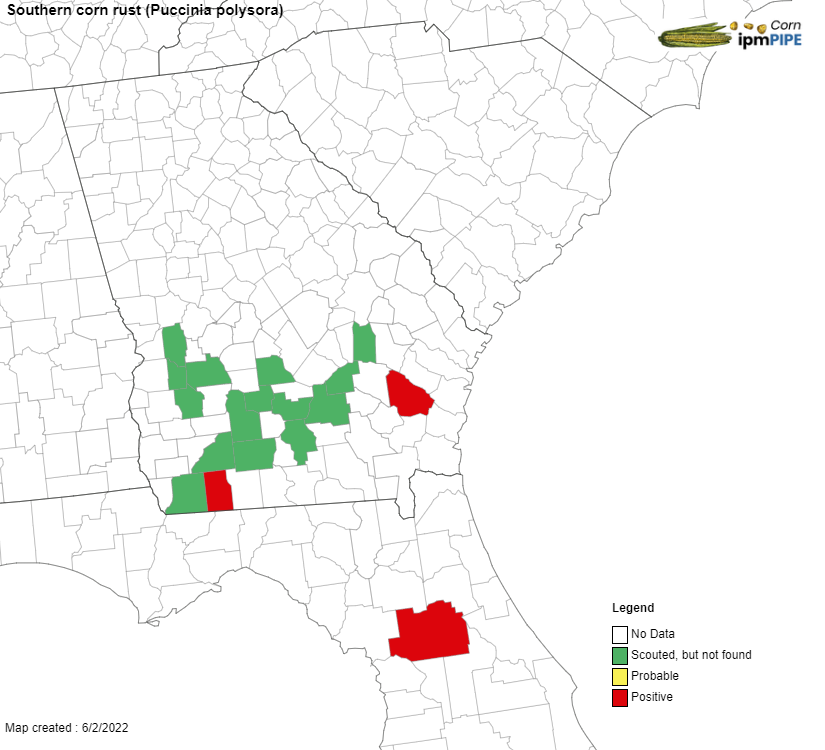As temperatures begin to rise in South Georgia, crops become more susceptible to fungal diseases that can be detrimental if not treated in a timely manner. Corn rusts are currently a topic of discussion in our area, and it is important to know the differences between these pathogens so that appropriate fungicide applications can be made if needed.

There are two types of rust that can affect corn, common rust and southern rust. Common rust (Puccinia sorghi) is characterized by brick-red to brown pustules that tend to be spread out and found on the upper and lower leaf surfaces while southern rust (Puccinia polysora) can be identified by orange to tan pustules that occur in clusters on the upper leaf surfaces as seen in Figure 1. If further evidence is needed to determine which fungus is present, examining the fungal spores under a microscope will give an accurate diagnosis. Figure 2 shows a microscopic comparison of the fungal spores where southern rust spores are lighter and more elongated than the darker and more circular common rust spores.

Southern corn rust can have a significant impact on yield if cases are severe enough. Once this disease attaches to the plant, it uses the plant’s nutrients to grow and reproduce. The presence of rust pustules causes tears in leaf epidermal tissue which interferes with the plant’s ability to efficiently regulate water and ultimately reduces grain fill.
Southern corn rust is considered a tropical disease that spreads via wind currents. Once rust spores reach corn fields and conditions are favorable, it takes less than two weeks for pustules to form on corn leaves. High relative humidity and temperatures around 80 degrees Fahrenheit is the optimal environment for this disease to develop and spread if timely fungicide applications are not made.

As of June 6, 2022, the state of Georgia has two confirmed cases of southern corn rust in Grady County and Wayne County with more cases expected to pop up in the upcoming months. This is why it is extremely important to scout your fields regularly and be informed on where the disease has been identified in relation to your area. Stay up to date on confirmed cases of southern corn rust with the following link: https://maps.eddmaps.org/annualprogress/index.cfm?sub=17596&l48=1&states=TX,ND,FL,PA&neg=1&countries=us,ca